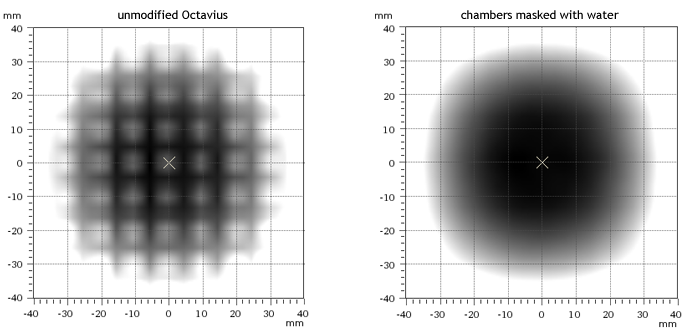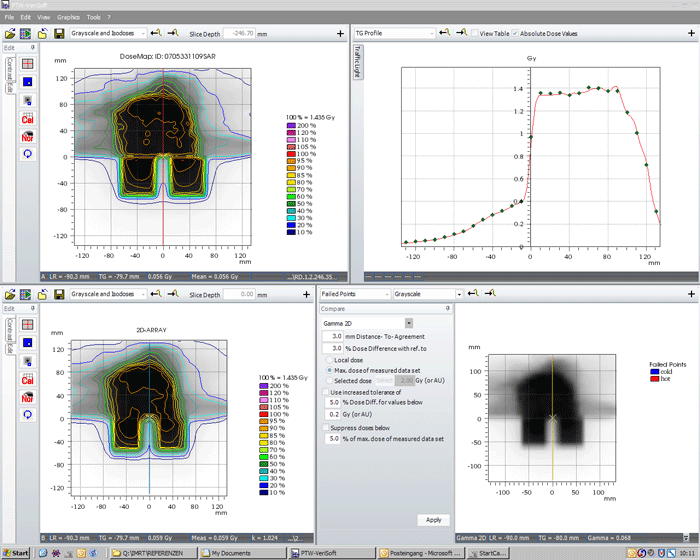Calculation Grid Effects with AAA and the seven29 - The "Solution"
The "problem" described elsewhere can be understood by looking at the measurement process.
Measuring with the ARRAY means placing a large quantity of air-filled ionization chambers inside an otherwise homogeneous phantom. According to cavity theory, when measuring with an air-filled chamber, one is interested in "dose to the undisturbed medium". By bringing in air-filled cubes, the detectors disturb the homogeneous phantom.
In absolute dosimetry, this is compensated by applying certain correction factors (displacement correction, ratio of mass stopping powers etc.).
When the phantom is CT-scanned with normal resolution, the detector's air cavities show up on the images as low HU regions. Modern (second generation) dose calculation algorithms like Monte-Carlo or AAA will now produce dose distributions that are sensitive to inhomogeneities on this small scale. This was not the case with a "stiff" density-scaling algorithm like PBC - such 1st generation algorithms would not "react" upon tiny 5x5 mm air volumes ...
Dose inside the air cavity is smaller than in the surrounding medium. The reference dose should therefore not be taken from the center of the air cavities, but from the undisturbed medium at the same point.
How can this be acomplished in Eclipse? Very simple. A synthetic phantom structure, just large enough to cover the cavities (e.g. 290 x 290 x 8 mm), is generated and filled with constant HU. This structure overrides or masks the HU pixel values in this volume. We use 0 HU (water), because this is the average HU value in the 8 mm thick masking volume.
The calculated dose plane which is exported to VeriSoft remains the same: for Octavius, this plane always goes through the chamber centers. The calculated matrix (right image) is now free from any "dose waves", here for 6 MV:

The following graph shows calculated crossplane profiles through the unmodified (blue) and the modified (red) phantom:
Before masking was introduced, the verification of IMRT plans with Octavius already worked very well. Now it often works even better. Whether the improvement is statistically significant is currently being evaluated.
In the following example (9-field IMRT plan), all 729 points pass the 3%/3mm gamma criterion. The chambers are masked with water:
P.S.: The Eclipse related question why the two AAA-calculations with 1 mm and 2.5 mm are so different inside the cavities is still unanswered.


